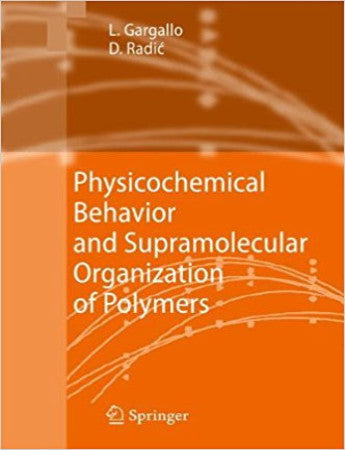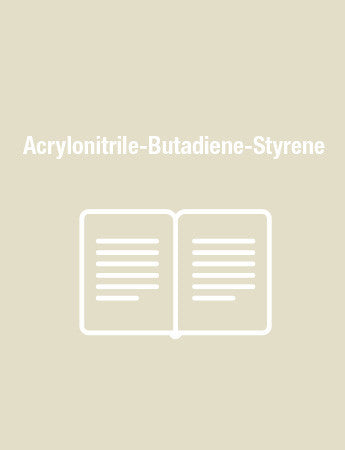Physicochemical Behavior and Supramolecular Organization of Polymers
As the title suggests, this monograph features the physicochemical behavior and supramolecular organization of polymers. The book consists of four chapters dealing with solution properties, viscoelastic behavior, physicochemical aspects at interfaces and supramolecular structures of polymeric systems. The classical treatment of the physicochemical behavior of polymers is presented in such a way that the book will meet the requirements of a beginner in the study of polymeric systems in solution and in some aspects of the solid state, as well as those of the experienced researcher in other types of materials. Physicochemical behavior and Supramolecular Organization of Polymers is ultimately, a contribution to the chemistry of materials; it is a powerful reference tool for students and scientists working both in polymer chemistry, polymer physics and materials science.
I. Polymer Solution Behavior. The polymer in Pure Solvent and in Mixed Solvent.
1.1 Introduction. Solution Properties.
1.2 Polymer Solutions in Good Solvents. Excluded-Volume effects.
1.3 Theta Condition.
1.4 Concentration Regimes.
1.5 Critical Phenomena in Polymer Solutions.
1.6 Polymers in Binary solvents. Cosolvency Effects. Preferential Adsorption phenomena.
1.7 Thermodynamical Description. Association Equilibria Theory.
II. Viscoelastic Behavior of Polymers.
2.1 Introduction.
2.2 The Nature of Viscoelasticity.
2.3 Mechanical Dynamical and Dielectric Relaxations.
2.4 Molecular Theories.
2.5 Viscoelastic Properties of Poly (methacrylates), Poly (itaconates) and Poly (carbonates).
III. Physicochemical Aspects of Polymer at Interfaces.
3.1 Introduction.
3.2 Langmuir monolayers and Langmuir-Blodgett Films.
3.3 Amphiphilic block Copolymer Behavior.
3.4 Polymer Adsorption from solution.
3.5 Wettability and Contact Angles.
IV. Complex Polymeric Systems. Macromolecular Structures Organization. Design and Formation using Interfaces and Cyclic Molecules.
4.1 Introduction
4.2 Inclusion Complexes between Polymers and Cyclic molecules. Surface Activity.
4.3 Block Copolymers and dendronized Polymers at the Interfaces. Self–Assembles Effect of Molecular Architectures.
1.1 Introduction. Solution Properties.
1.2 Polymer Solutions in Good Solvents. Excluded-Volume effects.
1.3 Theta Condition.
1.4 Concentration Regimes.
1.5 Critical Phenomena in Polymer Solutions.
1.6 Polymers in Binary solvents. Cosolvency Effects. Preferential Adsorption phenomena.
1.7 Thermodynamical Description. Association Equilibria Theory.
II. Viscoelastic Behavior of Polymers.
2.1 Introduction.
2.2 The Nature of Viscoelasticity.
2.3 Mechanical Dynamical and Dielectric Relaxations.
2.4 Molecular Theories.
2.5 Viscoelastic Properties of Poly (methacrylates), Poly (itaconates) and Poly (carbonates).
III. Physicochemical Aspects of Polymer at Interfaces.
3.1 Introduction.
3.2 Langmuir monolayers and Langmuir-Blodgett Films.
3.3 Amphiphilic block Copolymer Behavior.
3.4 Polymer Adsorption from solution.
3.5 Wettability and Contact Angles.
IV. Complex Polymeric Systems. Macromolecular Structures Organization. Design and Formation using Interfaces and Cyclic Molecules.
4.1 Introduction
4.2 Inclusion Complexes between Polymers and Cyclic molecules. Surface Activity.
4.3 Block Copolymers and dendronized Polymers at the Interfaces. Self–Assembles Effect of Molecular Architectures.
Prof. Dr. Ligia Gargallo, BSc., Ph.D., (full professor) is the 2007 L'Oreal UNESCO Laureate. She was born in 1934 and studied Pharmaceutical Chemistry. Prof. Gargallo obtained her Ph.D. in Physical Chemistry in 1971 and is a Full Professor at the Pontificia Universidad Catolica de Chile which she joined in 1976. Expertise includes university teaching and research in Physical Chemistry and Polymer Science.
Her co-author Prof. Dr. Deodato Radic is also professor at Pontificia Universidad Catolica de Chile.
Her co-author Prof. Dr. Deodato Radic is also professor at Pontificia Universidad Catolica de Chile.




